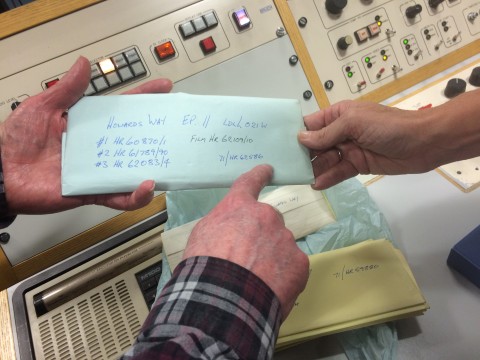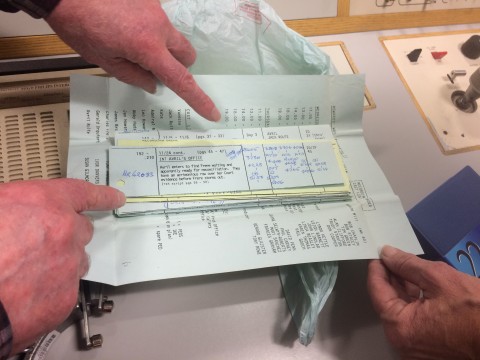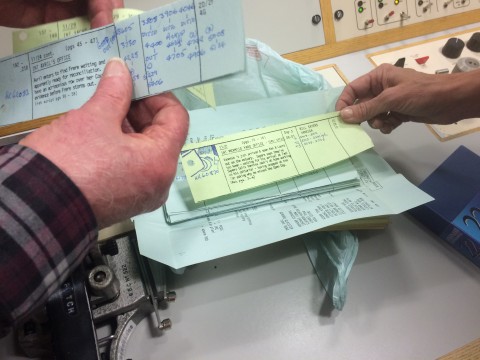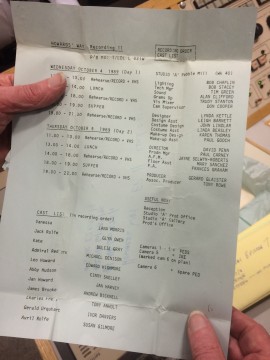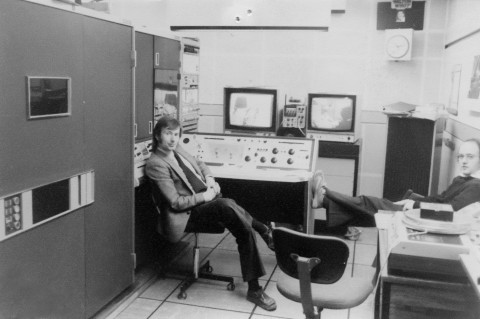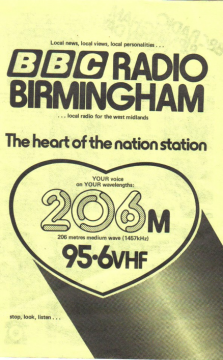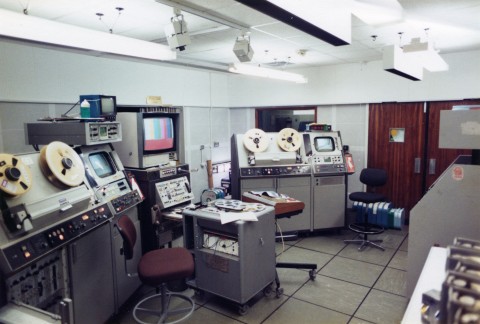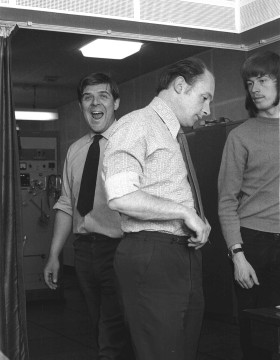
Photo by Jim Gregory, no reproduction without permission.
The photo includes: Milton Hainsworth, Graham Winter and Mike Brown. It was taken by Jim Gregory in June 1973.
“Milton Hainsworth was a News film editor, Graham was TK supervisor, although technically the post had been re-titled Senior Recording Engineer. Mike was the original film projectionist for Film Unit and the Dubbing Suite, he defected to Central and is now a Video Editor at BBC Nottingham.
In the background is a Westrex Sepmag machine. The photograph was taken by Jim from the Telecine Quality Check Room, which only lasted for a few more years as fairly big alterations were made to that end of the Telecine VT area later.”
Jim Gregory
The following comments were left on the Pebble Mill Facebook page:
Ray Lee: ‘I remember all 3 as I joined Telecine in 1974, Graham soon moved to Wood Norton, but Milton was still around when News editing had gone to Betacam tapes. Don’t remember where Mike moved to, but our paths didn’t cross often.’
Christopher Hall: ‘I remember Graham Winter from Wood Norton. Sadly he died a couple of years ago.’
Peter Woolley: ‘I remember Milton! I think he refused to go to his own leaving party!’
Lynn Cullimore: ‘Well I certainly remember Milton. Yes, I think he did not go to his leaving party bless him.’
Mike Dhonau: ‘I spent 7 weeks with Graham running training in Oman – in 1993. Great times. He was a little plumper then…’
Max Mulgrew: ‘Peter Woolley is correct. Milton was not at his leaving do, on floor two at Pebble Mill, and later refused to accept his leaving present. I think Sue Beardsmore was among those at the gathering.’
Peter Greenhalgh: ‘Mike Brown is still around. Just showed him the pic as he’s not on FB. He does all the tech op jobs here, and was a freelance camera op before joining us.’
